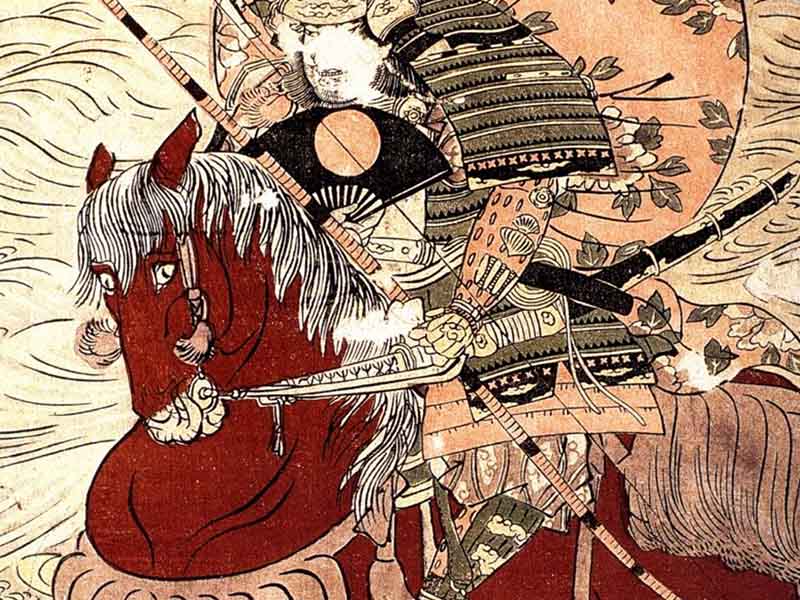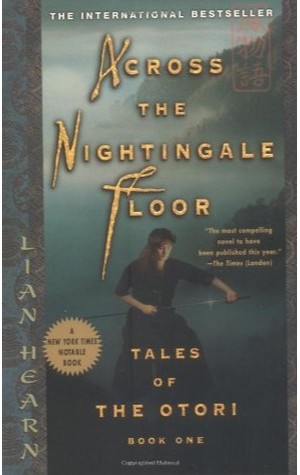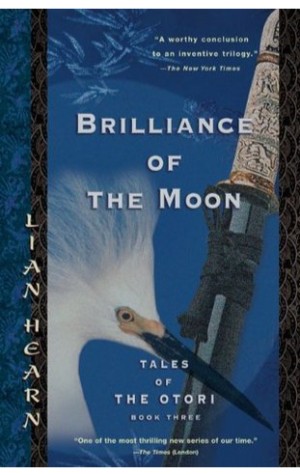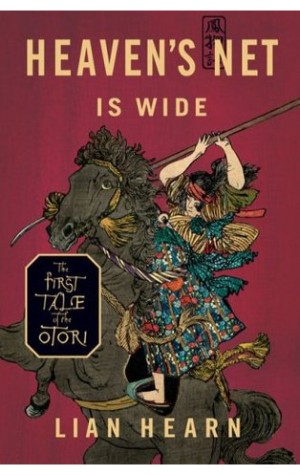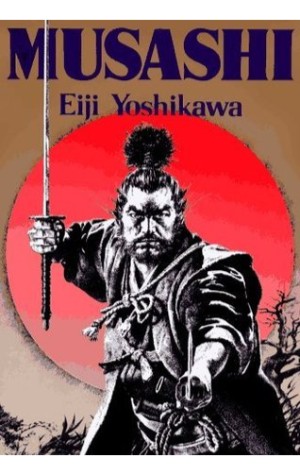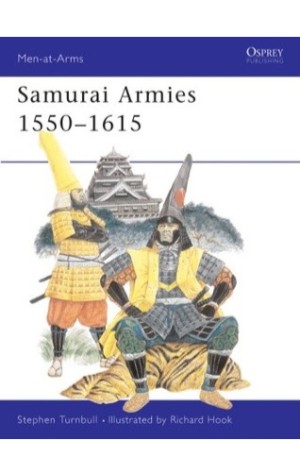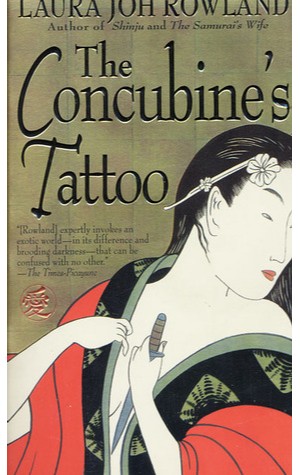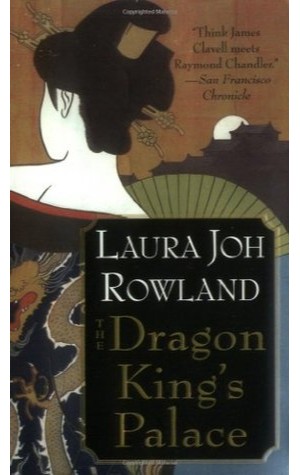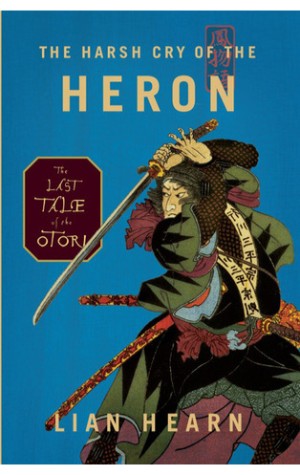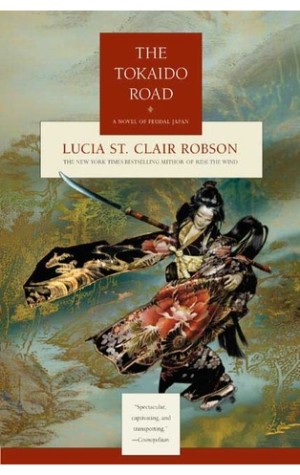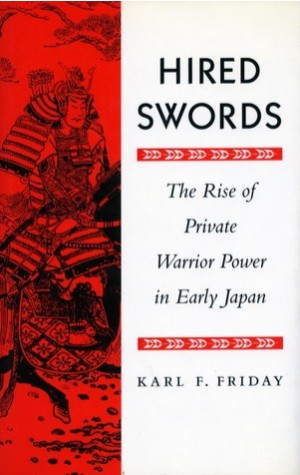The Best Books About Ancient & Feudal Japan
“What are the best books about Ancient & Feudal Japan?” We looked at 126 of the top fiction & nonfiction books, aggregating and ranking them so we could answer that very question!
The top 24 titles, all appearing on 2 or more “Best Feudal Japan” book lists, are ranked below by how many lists they appear on. The remaining 100+ titles, as well as the lists we used are in alphabetical order at the bottom of the page.
Happy Scrolling!
Top 24 Ancient & Japan Books
24 .) Across the Nightingale Floor (Tales of the Otori, #1) by Lian Hearn
- Goodreads
- Library Thing
The youth Takeo has been brought up in a remote mountain village among the Hidden, a reclusive and spiritual people who have taught him only the ways of peace. But unbeknownst to him, his father was a celebrated assassin and a member of the Tribe, an ancient network of families with extraordinary, preternatural skills. When Takeo’s village is pillaged, he is rescued and adopted by the mysterious Lord Otori Shigeru. Under the tutelage of Shigeru, he learns that he too possesses the skills of the Tribe. And, with this knowledge, he embarks on a journey that will lead him across the famed nightingale floor—and to his own unimaginable destiny…
23 .) Ashigaru 1467–1649 by Stephen Turnbull
- History Of War
- Warlord Games
The ashigaru were the foot soldiers of old Japan. Although recruited first to swell an army’s numbers and paid only by loot, the samurai began to realise their worth, particularly with arquebuses and spears, until well-trained ashigaru made up a vital part of any samurai army. This book tells the story of the ashigaru for the first time, their origins, recruitment training and use in various wars, such as the Gempei Wars of 1180-1185 and the Onin War of 1467-1477. Stephen Turnbull draws on previously untranslated Japanese sources and unpublished illustrations that show the range of ashigaru activity, from sailors to catapult artillery men as well as the disciplined ranks of warriors that they had become.
22 .) Black Lotus (Sano Ichiro, #6) by Laura Joh Rowland
- Goodreads
- Library Thing
When veteran samurai-detective Sano Ichiro, the most Honorable Investigator of Events, Situations, and People, is called on to investigate the burning of a cottage belonging to the Black Lotus Temple, he makes a shocking discovery. The three victim of the blaze did not die in the fire, but were brutally murdered before the fire even began. With a triple homicide on his hands, Sano’s search for a killer leads him to Haru, an orphan girl found at the scene of the crime. But Sano’s wife, Reiko, investigating the case against Sano’s wishes, is convinced of Haru’s innocence. Reiko’s investigation leads her behind the walls of the Black Lotus Temple, where she discovers a sect involved in extortion, prostitution, and hedonistic rituals. Could one of the sect’s members be the killer? Now Reiko must risk her marriage to Sano in order to prove Haru’s innocence…
21 .) Brilliance of the Moon (Tales of the Otori, #3) by Lian Hearn
- Goodreads
- Library Thing
A beautiful, haunting evocation of the medieval Japan of Lian Hearn’s imagination, this thrilling follow-up to Grass for His Pillow and Across the Nightingale Floor delves deeper into the complex loyalties that bind its characters from birth. Filled with adventure and surprising twists of plot and fortune, this third book in the Tales of the Otori series travels beyond the Three Countries, to the outside influences that threaten to intrude upon this isolated realm.
20 .) Grass for His Pillow by Gillian Rubinstein
- Goodreads
- Library Thing
“Praised for its epic scope and descriptive detail, Across the Nightingale Floor, the first book in the Tales of the Otori series, was an international bestseller and critical success, named by the London Times as “”the most compelling novel to have been published this year.”” With Grass for His Pillow, Book Two, we return to the medieval Japan of Lian Hearn’s creation—a land of harsh beauty and deceptive appearances.
In a complex social hierarchy, amid dissembling clans and fractured allegiances, there is no place for passionate young love. The orphan Takeo has been condemned to work as an assassin—an enforced occupation that his father sacrificed his own life to escape. Meanwhile, Takeo’s beloved Shirakawa Kaede, heir to the Murayama and alone in the world, must find a way to unify the domain she has inherited, as she fights off the advances of would-be suitors and hopes against fading hope that Takeo will return to her…”
19 .) Heaven’s Net is Wide (Tales of the Otori, #0) by Lian Hearn
- Goodreads
- Library Thing
A first installment in a three-part prequel to Across the Nightingale Floor follows the story of spiritual mentor Lord Otori Shigeru, who receives warrior training, forges a relationship with a tribe of mysterious assassins, and meets the Lady Maruyama.
18 .) InuYasha: Turning Back Time (InuYasha, #1) by Rumiko Takahashi
- Goodreads
- Library Thing
Follows the adventures of high school student Kagome and the feral half-demon dog-boy Inu-Yasha as they join forces to reclaim the “Jewel of Four Souls” to prevent evil mortals and demons from using its terrifying powers.
17 .) Musashi by Eiji Yoshikawa
- Goodreads
- Library Thing
Miyamoto Musashi was the child of an era when Japan was emerging from decades of civil strife. Lured to the great Battle of Sekigahara in 1600 by the hope of becoming a samurai-without really knowing what it meant-he regains consciousness after the battle to find himself lying defeated, dazed and wounded among thousands of the dead and dying. On his way home, he commits a rash act, becomes a fugitive and brings life in his own village to a standstill-until he is captured by a weaponless Zen monk.
16 .) Nagashino 1575 by Stephen Turnbull
- History Of War
- Warlord Games
When Portuguese traders took advantage of the constant violence in Japan to sell the Japanese their first firearms, one of the quickest to take advantage of this new technology was the powerful daimyo Oda Nobunaga. In 1575 the impetuous Takeda Katsuyori laid siege to Nagashino castle, a possession of Nobunaga’s ally, Tokugawa Ieyasu. An army was despatched to relieve the siege, and the two sides faced each other across the Shidarahara. The Takeda samurai were brave, loyal and renowned for their cavalry charges, but Nobunaga, counting on Katsuyori’s impetuosity, had 3,000 musketeers waiting behind prepared defences for their assault. The outcome of this clash of tactics and technologies was to change the face of Japanese warfare forever.
15 .) Ninja AD 1460-1650 by Stephen Turnbull
- History Of War
- Warlord Games
The Ninja were the secret agents and assassins of feudal Japan and they remain a subject of enduring fascination. They first emerged during the power struggles of 9th and 10th century Japan, in response to the increasing demand for spies, informants and even assassins, and they were used until the mid-1600s when they disappeared on account of a campaign to destroy them. This title provides an accurate and detailed account of the reality of the Ninja, detailing their daily life, training, hiring, combat use and secret operations; also covered are the Ninja’s use and knowledge of poisons, medicines and charms.
14 .) Samurai Armies 1550-1615 by Stephen Turnbull
- History Of War
- Warlord Games
In 1543 three Portuguese merchants entered a turbulent Japan, bringing with them the first firearms the Japanese had ever seen: simple matchlock muskets called arquebuses. They proved a decisive addition to the Japanese armoury, as for centuries the samurai had fought only with bow, sword and spear. In 1575, during the Battle of Nagashino, one of the greatest original thinkers in the history of samurai, Oda Nobunaga, arranged his arquebusiers in ranks three deep behind a palisade and proceeded, quite literally, to blow his opponent’s cavalry to pieces, marking the beginning of a new era in Japanese military history.
13 .) Samurai Women 1184–1877 by Stephen Turnbull
- History Of War
- Warlord Games
From when the Empress Jingo-kogo led an invasion of Korea while pregnant with the future Emperor Ojin, tales of female Japanese warriors have emerged from Japan’s rich history. Using material that has never been translated into English before, this book presents the story of Japan’s female warriors for the first time, revealing the role of the women of the samurai class in all their many manifestations, investigating their weapons, equipment, roles, training and belief systems. Crucially, as well as describing the women who were warriors in their own right, like Hauri Tsuruhime and the women of Aizu, this book also looks at occasions when women became the power behind the throne, ruling and warring through the men around them.
12 .) Sekigahara 1600 by Anthony J Bryant
- History Of War
- Warlord Games
Sekigahara was the most decisive battle in Japanese history. Fought against the ritualised and colourful backdrop of Samurai life, it was the culmination of a long-standing power struggle between Tokugawa Ieyasu and Hashiba Hideyoshi, two of the most powerful men in Japan. Armies of the two sides met on the plain of Sekigahara on 21 October 1600, in thick fog and deep mud. By the end of the day 40,000 heads had been taken and Ieyasu was master of Japan. Within three years the Emperor would grant him the title he sought – Shogun. This title describes the campaign leading up to this great battle and examines Sekigahara, including the forces and personalities of the two major sides and that of the turncoat Kobayakawa Hideaki.
11 .) Shinju (Sano Ichiro, #1) by Laura Joh Rowland
- Goodreads
- Library Thing
“When beautiful, wealthy Yukiko and low-born artist Noriyoshi are found drowned together in a shinju, or ritual double suicide, everyone believes the culprit was forbidden love. Everyone but newly appointed yoriki Sano Ichiro.
Despite the official verdict and warnings from his superiors, the shogun’s Most Honorable Investigator of Events, Situations, and People suspects the deaths weren’t just a tragedy — they were murder. Risking his family’s good name and his own life, Sano will search for a killer across every level of society — determined to find answers to a mystery no one wants solved. No one but Sano…”
10 .) The Concubine’s Tattoo (Sano Ichiro, #4) by Laura Joh Rowland
- Goodreads
- Library Thing
A richly crafted novel set in seventeenth-century Japan, Laura Joh Rowland’s The Concubine’s Tattoounfolds with all the excitement of a superb murder mystery and a sweeping, sensuous portrait of an exotic land. Sano Ichiro, the Shogun’s most honorable investigator, is summoned to the imperial palace to find the murderer of Harume, a young concubine poisoned while applying a lover’s tattoo. Sano’s new bride, Reiko, insists on helping him with the case. Reiko’s samurai blood and warrior’s skill alarm her new husband, who expected a docile wife. But Reiko is only the first of many surprises…
9 .) The Dragon King’s Palace (Sano Ichiro, #8) by Laura Joh Rowland
- Goodreads
- Library Thing
On a whim of the shogun’s mother, a procession has left the sweltering heat of Edo, bound for the cooler climate of Mount Fuji. Among her traveling companions are Reiko, the beautiful wife of Sano Ichiro, the shogun’s Most Honorable Investigator of Events, Situations, and People; Reiko’s friend Midori, nine months pregnant; and Lady Yanagisawa, the deranged wife of the shogun’s powerful second-in-command. None of them look forward to the trip. But their troubles have only begun when their procession is stopped suddenly on a deserted road. The entire retinue is viciously slaughtered and the four women are bound and taken away, imprisoned by a mysterious kidnapper.
8 .) The First Samurai: The Life and Legend of the Warrior Rebel, Taira Masakado by Karl Friday
- Historum
- Quora
A portrait of Japan’s first significant samurai leader and his world Was samurai warrior Taira Masakado a quixotic megalomaniac or a hero swept up by events beyond his control? Did he really declare himself to be the “New Emperor”? Did he suffer divine retribution for his ego and ambition? Filled with insurrections, tribal uprisings, pirate disturbances, and natural disasters, this action-packed account of Masakado’s insurrection offers a captivating introduction to the samurai, their role in 10th-century society, and the world outside the capital–a must-read for those interested in early Japan, samurai warfare, or the mystique of ancient warriors.
7 .) The Harsh Cry of the Heron (Tales of the Otori, #4) by Lian Hearn
- Goodreads
- Library Thing
A dazzling epic of warfare and sacrifice, passionate revenge, treacherous betrayal, and unconquerable love, The Harsh Cry of the Heron takes the storytelling achievement of Lian Hearn’s fantastic medieval Japanese world to startling new heights of drama and action. Fifteen years of peace and prosperity under the rule of Lord Otori Takeo and his wife Kaede is threatened by a rogue network of assassins, the resurgence of old rivalries, the arrival of foreigners bearing new weapons and religion, and an unfulfilled prophecy that Lord Takeo will die at the hand of a member of his own family.
6 .) The Perfumed Sleeve (Sano Ichiro, #9) by Laura Joh Rowland
- Goodreads
- Library Thing
“November 1694. The streets of Edo are erupting in violence as two factions struggle for control over the ruling Tokugawa regime. One is led by the shogun’s cousin, Lord Matsudaira, and the other by the shogun’s second-in-command, Chamberlain Yanagisawa. Each side pressures Sano Ichiro, the shogun’s most honorable investigator, to join its ranks.
When one of the shogun’s most trusted advisers is found dead, Sano is forced to honor a posthumous request for a murder investigation. Senior Elder Makino believed that his death would be the result of assassination rather than natural causes. Although he and Sano were bitter enemies, Makino knew that the incorruptible Sano would be duty-bound to oblige his final wish.”
5 .) The Tokaido Road: A Novel of Feudal Japan by Lucia St. Clair Robson
- Goodreads
- Library Thing
After the execution of her father, the young and beautiful Lady Asano is in grave danger from the powerful Lord Kira. In order to save herself Asano must find Oishi, the leader of the fighting men of her clan. She believes he is three hundred miles to the southwest in the imperial city of Kyoto. Disguising her loveliness in the humble garments of a traveling priest, and calling herself Cat, Lady Asano travels the fabled Tokaido Road. Her only tools are her quick wits, her samurai training, and her deadly, six foot-long naginata. And she will need them all, for a ronin has been hired to pursue her, a mysterious man who will play a role in Cat’s drama that neither could have ever imagined. . . .
4 .) The Way of the Traitor (Sano Ichiro, #3) by Laura Joh Rowland
- Goodreads
- Library Thing
“A volatile, corrupt city threatened by toreign invasion and ru by an iron-fisted government, Nagasaki is the last place Sano Ichiro wants to be, Unfortunately, the shogun’s Most Honorable Investigator of Events, Situations, and People has been banished there by a wicked adversary in the shogun’s court.
Surrounded by spies, Sano must tread carefully. When the body of a Dutch trader washes ashore, he finds himself leading an investigation that could push Japan into war — even as it thrusts his life into the hands of powerful enemies. Sano has to unmask a killer and prove his innocence, or his samurai head, and maybe his country, will fall.”
3 .) Hired Swords: The Rise of Private Warrior Power in Early Japan by Karl F. Friday
- Historum
- Questia
- Quora
Tracing the evolution of state military institutions from the seventh to the twelfth centuries, this book challenges much of the received wisdom of Western scholarship on the origins and early development of warriors in Japan.
2 .) Shōgun (Asian Saga, #1) by James Clavell
- Goodreads
- Library Thing
- Quora
“Here is the world-famous novel of Japan that is the earliest book in James Clavell’s masterly Asian saga. Set in the year 1600, it tells the story of a bold English pilot whose ship was blown ashore in Japan, where he encountered two people who were to change his life: a warlord with his own quest for power, and a beautiful interpreter torn between two ways of life and two ways of love.
The principal figures are John Blackthorne, whose dream it is to be the first Englishman to circumnavigate the globe, to wrest control of the trade between Japan and China from Portuguese, and to return home a man of wealth and position; Toranaga, the most powerful feudal lord in Japan, who strives and schemes to seize ultimate power by becoming Shogun—the Supreme Military Dictator—and to unite the warring samurai fiefdoms under his own masterly and farsighted leadership; and the Lady Mariko, a Catholic convert whose conflicting loyalties to the Church and her country are compounded when she falls in love with Blackthorne, the barbarian intruder.”
1 .) A History of Japan by George Sansom
- Gaijin Pot
- Historum
- History Of War
This is a straightforward narrative of the development of Japanese civilization to 1334 by the author of Japan: A Short Cultural History. While complete in itself, it is also the first volume of a three-volume work which will be the first large-scale, comprehensive history of Japan. Taken as a whole, the projected history represents the culmination of the life work of perhaps the most distinguished historian now writing on Japan. Unlike the renowned Short Cultural History, it is concerned mainly with political and social phenomena and only incidentally touches on religion, literature, and the arts. The treatment is primarily descriptive and factual, but the author offers some pragmatic interpretations and suggests comparisons with the history of other peoples. A History of Japan to 1334 describes the growth from tribal origins of an organized state on a Chinese model, gives a picture of the life of the Royal Court, and examines the conflict between a polished urban nobility and a warlike rural gentry. It traces the evolution of an efficient system of feudal government which deprived the sovereign of all but his ritual functions and the prestige of his ancestry. The structure of Japanese feudal society is depicted in some detail and explained in terms of its internal stresses and its behavior in peace and war, especially during the period of the Mongol attacks in the last decades of the thirteenth century. The volume ends with the collapse of the feudal government at Kamakura under the attack of ambitious rivals.
The 100+ Additional Best Ancient Japan Books
| # | Books | Authors | Lists |
| (Titles Appear On 1 List Each) | |||
| 25 | A Book of Five Rings | History Of War | |
| 26 | A Diplomat in Japan | Sir Ernest Satow | Gaijin Pot |
| 27 | An Introduction to the History of Japan | Katsuro Hara | Questia |
| 28 | Autumn Lightning: The Education of an American Samurai | David Lowry | Quora |
| 29 | Bending Adversity | David Pilling | Gaijin Pot |
| 30 | Betrayal at Iga (Shinobi Mystery #5) | Susan Spann (Goodreads Author) | Goodreads |
| 31 | Buddhist Hagiographies in Early Japan: Images of Compassion in the Gyoki Tradition | Jonathan Morris Augustine | Questia |
| 32 | Bundori | Laura Joh Rowland | Library Thing |
| 33 | Classical Bujutsu (Martial Arts and Ways of Japan) | Donn F. Draeger | Quora |
| 34 | Court Life in Ancient Japan | Historum | |
| 35 | Death at the Crossroads (Matsuyama Kaze, #1) | Dale Furutani | Goodreads |
| 36 | Elektra: The Hand (Paperback) | Akira Yoshida | Goodreads |
| 37 | Embracing Defeat | John Dower | Gaijin Pot |
| 38 | Everyday Things in Premodern Japan | ||
| 39 | Feudalism In Japan | Historum | |
| 40 | Flame in the Mist (Flame in the Mist, #1) | Renee Ahdieh (Goodreads Author) | Goodreads |
| 41 | Hatamoto Samurai Horse and Foot Guards: 1540-1724 | History Of War | |
| 42 | Heavenly Warriors: The Evolution of Japan | Historum | |
| 43 | Hideyoshi | Historum | |
| 44 | Home and Away: Writing the Beautiful Game | Historum | |
| 45 | In Darkness, Death (Samurai Detective, #3) | Dorothy Hoobler | Goodreads |
| 46 | Inuyasha, Volume 02 (VIZBIG Edition) | Rumiko Takahashi | Goodreads |
| 47 | InuYasha: A Warrior’s Code (InuYasha, #10) | Rumiko Takahashi | Goodreads |
| 48 | InuYasha: Building a Better Trap (InuYasha, #9) | Rumiko Takahashi | Goodreads |
| 49 | InuYasha: Family Matters (InuYasha, #2) | Rumiko Takahashi | Goodreads |
| 50 | InuYasha: Flesh and Bone (InuYasha, #5) | Rumiko Takahashi | Goodreads |
| 51 | InuYasha: Good Intentions (InuYasha, #3) | Rumiko Takahashi | Goodreads |
| 52 | InuYasha: Lost and Alone (InuYasha, #4) | Rumiko Takahashi | Goodreads |
| 53 | Japan Emerging: Premodern History to 1850 | Historum | |
| 54 | Japan from Tokugawa Times to the Present | Andrew Gordon | Gaijin Pot |
| 55 | Japan Rising | Kume Kunitake | Gaijin Pot |
| 56 | Japan’s Longest Day | The Pacific War Research Society | Gaijin Pot |
| 57 | Japanese Battleships 1897-1945 – A Photographic Archive | History Of War | |
| 58 | Japanese Warrior Monks AD 949–1603 | Warlord Games | |
| 59 | Jembatan Musim Gugur (Samurai, #2) | Takashi Matsuoka | Goodreads |
| 60 | Katana | History Of War | |
| 61 | Kawanakajima 1553–64 | Warlord Games | |
| 62 | Ladylord (Paperback) | Sasha Miller | Goodreads |
| 63 | Legacies of the Sword | Historum | |
| 64 | Lone Wolf and Cub, Vol. 1: The Assassin’s Road (Lone Wolf and Cub, #1) | Kazuo Koike | Goodreads |
| 65 | Memoirs of a Geisha (Mass Market Paperback) | Arthur Golden | Goodreads |
| 66 | Memoirs of the Warrior Kumagai | Donald Ritchie | Quora |
| 67 | Miyamoto Musashi: His Life and Writings | Kenji Tokitsu | Quora |
| 68 | Pillow Book of Sei Shonagon | Historum | |
| 69 | Pirate of the Far East: 941-1644 | History Of War | |
| 70 | Ran [1985] | History Of War | |
| 71 | Rashomon Gate | I.J. Parker | Library Thing |
| 72 | Red Chrysanthemum | Laura Joh Rowland | Library Thing |
| 73 | Ronin (Paperback) | Frank Miller | Goodreads |
| 74 | Samurai 1550–1600 | Warlord Games | |
| 75 | Samurai Assassins – ‘Dark Murder’ and the Meiji restoration | History Of War | |
| 76 | Samurai Commanders (1) | Warlord Games | |
| 77 | Samurai Commanders (2) | Warlord Games | |
| 78 | Samurai Heraldry | Warlord Games | |
| 79 | Samurai Revolution: The Dawn of Modern Japan seen Through the Eyes of the Shogun’s Last Samurai | History Of War | |
| 80 | Samurai, Warfare and the State in Early Medieval Japan | Historum | |
| 81 | Sayonara (Paperback) | James A. Michener | Goodreads |
| 82 | Shanghai 1937 – Stalingrad on the Yangtze | History Of War | |
| 83 | Siege Weapons of the Far East: AD 612-1300 v. 1 | History Of War | |
| 84 | Siege Weapons of the Far East: AD 960-1644 v. 2 | History Of War | |
| 85 | Sisters of the Sword (Sisters of the Sword, #1) | Maya Snow | Goodreads |
| 86 | Sleeping Dragon, Rising Sun | Warlord Games | |
| 87 | Smoke in the Sun (Flame in the Mist, #2) | Renee Ahdieh (Goodreads Author) | Goodreads |
| 88 | Taiheiki: A Chronicle of Medieval Japan | History Of War | |
| 89 | Taiko | Eiji Yoshikawa | Quora |
| 90 | The Art of War (Paperback) | Sun Tzu | Goodreads |
| 91 | The Assassin’s Touch | Laura Joh Rowland | Library Thing |
| 92 | The Emperor of the Eight Islands (Tale of Shikanoko, #1) | Lian Hearn | Goodreads |
| 93 | The Emperor’s Woman (Sugawara Akitada #10) | I.J. Parker (Goodreads Author) | Goodreads |
| 94 | The Fire Kimono | Laura Joh Rowland | Library Thing |
| 95 | The Gempei War 1180-85 – The Great Samurai Civil War | History Of War | |
| 96 | The Ghost in the Tokaido Inn (Samurai Detective, #1) | Dorothy Hoobler | Goodreads |
| 97 | The Grace of Kings (The Dandelion Dynasty, #1) | Ken Liu (Goodreads Author) | Goodreads |
| 98 | The Heart of the Warrior: Origins and Religious Background of the Samurai System in Feudal Japan | Catharina Blomberg | Questia |
| 99 | The Heike Story | Quora | |
| 100 | The Hell Screen | I.J. Parker | Library Thing |
| 101 | The Hidden Legacy of Material Culture | ||
| 102 | The History of Japan | Louis G. Perez | Questia |
| 103 | The Imjin War | ||
| 104 | The Incense Game (Sano Ichiro, #16) | Laura Joh Rowland | Goodreads |
| 105 | The Mongol Invasion of Japan 1274 and 1281 | History Of War | |
| 106 | The Ninja’s Daughter (Shinobi Mystery, #4) | Susan Spann (Goodreads Author) | Goodreads |
| 107 | The Pillow Book of Lady Wisteria | Laura Joh Rowland | Library Thing |
| 108 | The Rape of Nanking | Iris Chang | Gaijin Pot |
| 109 | The Samurai | Warlord Games | |
| 110 | The Samurai Invasion of Korea 1592–98 | Warlord Games | |
| 111 | The Samurai’s Tale (Paperback) | Erik Christian Haugaard | Goodreads |
| 112 | The Samurai’s Wife | Laura Joh Rowland | Library Thing |
| 113 | The Snow Empress | Laura Joh Rowland | Library Thing |
| 114 | The Sword That Cut the Burning Grass (Samurai Detective, #4) | Dorothy Hoobler | Goodreads |
| 115 | The Tale of Genji | ||
| 116 | The Wages of Guilt | Ian Buruma | Gaijin Pot |
| 117 | The Way of the Dragon (Young Samurai, #3) | Chris Bradford (Goodreads Author) | Goodreads |
| 118 | The Way of the Sword (Young Samurai, #2) | Chris Bradford (Goodreads Author) | Goodreads |
| 119 | The Way of the Warrior (Young Samurai, #1) | Chris Bradford (Goodreads Author) | Goodreads |
| 120 | The World of the Shining Prince | Historum | |
| 121 | Time of the Dragons (Shike 1) | Robert Shea | Goodreads |
| 122 | Tokugawa Ieyasu: Shogun | Historum | |
| 123 | Trade-Buddhism: Maritime Trade, Immigration, and the Buddhist Landfall in Early Japan | Holcombe, Charles | Questia |
| 124 | Usagi Yojimbo, Book 1: The Ronin | Stan Sakai | Library Thing |
| 125 | Usagi Yojimbo, Vol. 24: Return of the Black Soul (Usagi Yojimbo, #24) | Stan Sakai | Goodreads |
| 126 | Usagi Yojimbo: Yokai (Usagi Yojimbo) | Stan Sakai | Goodreads |
9 Best Fiction & Nonfiction Feudal Japan Book Sources/Lists
| Source | Article |
| Gaijin Pot | 9 MUST-READ BOOKS ON JAPANESE HISTORY |
| Goodreads | Popular Feudal Japan Books |
| Historum | Books on Feudal Japan? |
| History Of War | Books about Japan |
| Library Thing | Most often tagged feudal japan |
| Questia | Ancient Japan |
| Quora | What’s the best book on Feudal Japan? |
| Books On Feudal Japan | |
| Warlord Games | Feudal Japan 1467-1603 |
